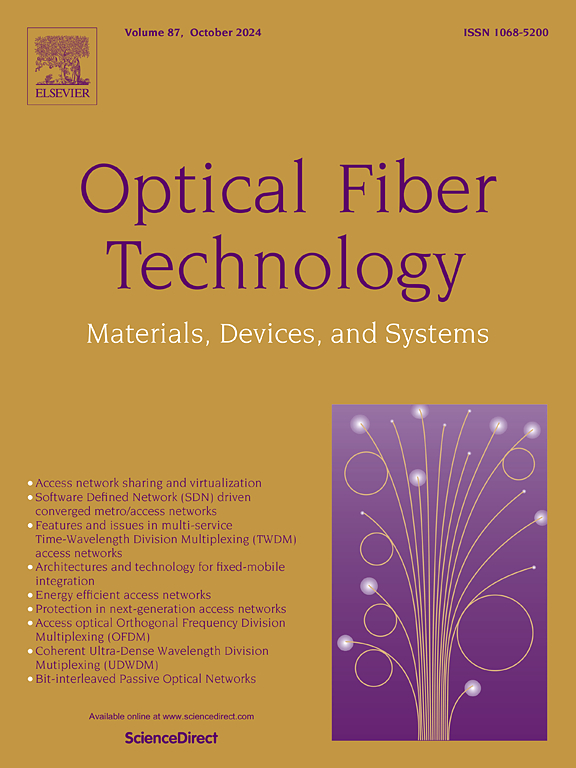AI-powered MMI fiber sensors for wide-range refractive index detection using neural networks algorithm
IF 2.6
3区 计算机科学
Q2 ENGINEERING, ELECTRICAL & ELECTRONIC
引用次数: 0
Abstract
This research presents an artificial intelligence (AI)-driven machine learning (ML) approach for accurately measuring refractive index (RI) values across both lower and higher regimes than the fiber material’s RI, using a simple single multimode interference (MMI) fiber sensor. The sensor configuration consists of a no-core fiber (NCF) segment between two single-mode fiber (SMF) sections. A Bilayer Neural Network (BNN) regression model is employed to predict both low refractive index (LRI) and high refractive index (HRI) regimes, achieving a broad dynamic measurement range from 1.3000 RIU to 1.3900 RIU for LRI regime and from 1.4600 RIU to 1.5500 RIU for HRI regime. The model demonstrates 99.7% accuracy and a low root mean square error (RMSE) of 0.0044, ensuring that predicted RI values closely match actual measurements without any RI ambiguity. Furthermore, the all-silica NCF structure is inherently resistant to temperature fluctuations, enabling its deployment in environments with varying temperatures without requiring additional temperature compensation mechanisms.
求助全文
约1分钟内获得全文
求助全文
来源期刊

Optical Fiber Technology
工程技术-电信学
CiteScore
4.80
自引率
11.10%
发文量
327
审稿时长
63 days
期刊介绍:
Innovations in optical fiber technology are revolutionizing world communications. Newly developed fiber amplifiers allow for direct transmission of high-speed signals over transcontinental distances without the need for electronic regeneration. Optical fibers find new applications in data processing. The impact of fiber materials, devices, and systems on communications in the coming decades will create an abundance of primary literature and the need for up-to-date reviews.
Optical Fiber Technology: Materials, Devices, and Systems is a new cutting-edge journal designed to fill a need in this rapidly evolving field for speedy publication of regular length papers. Both theoretical and experimental papers on fiber materials, devices, and system performance evaluation and measurements are eligible, with emphasis on practical applications.
 求助内容:
求助内容: 应助结果提醒方式:
应助结果提醒方式:


